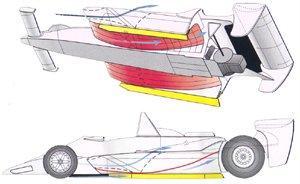Forgive me if this seems like a stupid question, but did ground effect cars use the top, front or bottom of the sidepods as main inlets for their venturi tunnels, or did the air come from the bottom of the front of the cars?
Also has there ever been an official F1 car that used other intakes for this purpose? Something like venturi tunnels with inlets at the front of the car or on the sides of the driver? Or would that defeat the purpose?
I'm asking not for a technical explanation of Ground effects which I would not understand anyway, but I ask out of interest in historical F1 cars with their more or less appealing appearance.
I know of the Brabham fan cars for instance, but what other less or more successfull ideas were tried that didn't use the Lotus 78 approach?
- Login or Register
No account yet? Sign up










